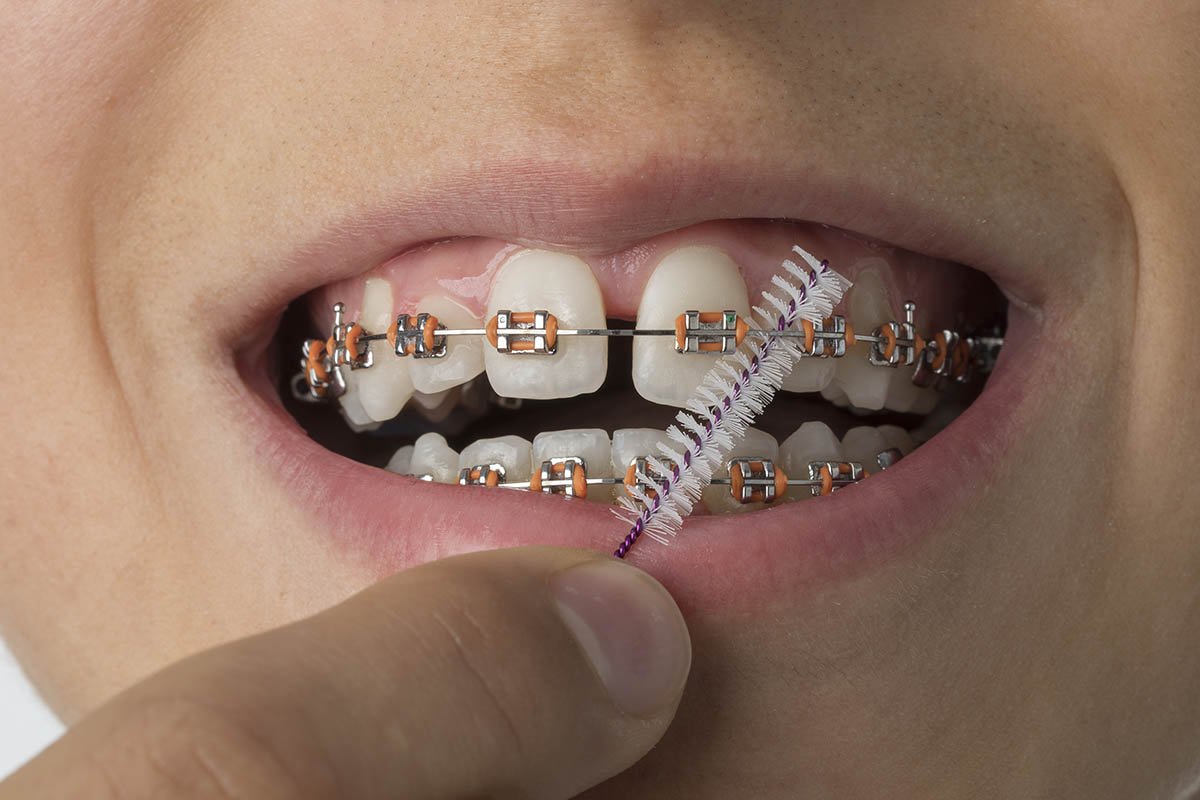


If you have multiple spaces in between your teeth because of small teeth and broad arches, braces may not work for you. You may need to have your frenulum severed or removed (doesn’t hurt, don’t worry), and you’ll need to be very diligent with your retainers, as diastemas have a tendency to reopen. While it’s not mandatory to treat diastemas, braces are the only way to reliably close that pesky front gap. We can either maintain the space for an implant or close it if you’re a good candidate. Check this article to learn why you can and should get braces if you have missing teeth. Your best bet is a multidisciplinary approach: a periodontist, dentist, and orthodontist will work on your case to make sure your gaps are closed and your teeth are stable. It’s possible to correct your bite at any age, so don’t worry too much about getting braces as an adult. In case of malocclusion, you will need braces anyway, and your orthodontist will implicitly close your gaps. Talk to your dentist or orthodontist about braces if: But when spaces interfere with your overall oral health, it’s best to get braces. Sometimes they’re just cosmetic, in which case, it’s totally up to you to have them fixed. You don’t always need to correct gaps in your teeth. But don’t worry, your orthodontist will fix it soon enough. If you need expanders, expect a large gap between your front teeth. Braces can create gaps too, but we often create them intentionally, as part of orthodontic treatment. Braces are often not the best course of action. Oddly shaped teeth like peg-shaped laterals can give the impression of gaps between teeth, although they often come in contact with other teeth at a gingival level. These new gaps usually need to be reversed with braces. This is because your teeth will gradually shift into the extraction site, losing contact with their neighbors. Your missing tooth may be obvious to you, but you may also notice some spaces developing around your missing tooth gap. However, in cases like these, gaps are the least of your problem, as you may have a serious bite issue and long narrow arches that need to be corrected. Front teeth can also tilt forward because of unhealthy habits like thumb sucking, creating a gap. These gaps occur because your teeth are proclining (tilting forward) since they have less bone to support them. This is often an obvious sign of periodontal disease, especially if you see those gaps in your front teeth. If you notice gaps developing where you didn’t have them before, go to the dentist ASAP. This is hereditary, and most likely a result of inheriting bone structure from one parent and teeth structure from the other. Your teeth may be too small to come in contact, or your arches may be too broad. Sometimes, gaps between teeth are simply a volume issue. This causes a gap between the front teeth, known as a diastema. For some people, this frenulum is thick and its fibers go all the way between the front central incisors. If you lift your upper lip, you’ll notice a soft tissue insertion going from your lip to your gums. Identifying why you have gapped teeth will help us choose the right course of treatment. However, braces are not always the right solution. Most of the time, they’re signaling a bigger problem, but since gaps are obvious, they’re often the patient’s chief complaint. Not all gaps between teeth are created equal. However, I’m not YOUR doctor, so please check with your orthodontist before doing anything to your braces, and don’t be afraid to ask them any questions you might have. So what exactly causes gapped teeth, and how can braces help you? Let’s figure it out together.ĭisclaimer: I’m a licensed orthodontist on a quest to make information on dental braces accessible and easy to understand. Teeth aren’t fixed within the bone, so it’s natural to notice changes as we grow older. You may have always had gaps in your teeth, or you’ve noticed them gradually develop over the years. If you have small spaces in between most of your teeth (also known as trema), or a large gap in between your front teeth (diastema), braces aren’t mandatory. If you have multiple gaps in your teeth as a result of missing teeth, you may need braces and/or implants to correct or close those spaces. But if your gap is placed somewhere else, it can be an issue. Gaps between front teeth, medically known as diastemas, are an individual trait that won’t impact the health of your teeth in the long run.

Depending on its location, a gap in your teeth can be charming.


 0 kommentar(er)
0 kommentar(er)
